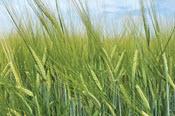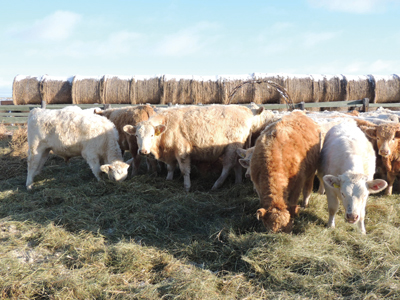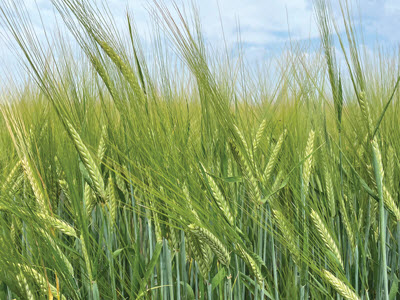
El Niño upsetting growers’ plans across the country
By Richard Kamchen
El Niño’s threat of below-normal precipitation is of particular concern for farmers in already dry Prairie regions, but far less so to crop growers in Ontario.
Going into December, 97 per cent of the Canadian Prairies were abnormally dry or in moderate to exceptional drought, according to Agriculture and Agri-Food Canada’s Drought Monitor.
Tom Jensen, a soil scientist and agronomist with Jensen AgGro, says farmers in the dryland and irrigated portions of southern Saskatchewan and Alberta have expressed their anxiety about dry conditions persisting into 2024’s growing season.
Dryland and irrigated regions
El Niño could force dry conditions to persist or worsen, prompting farmers in unirrigated areas of Saskatchewan and Alberta to eye more drought-tolerant crops.
Inadequate winter snowpack and no timely early spring rains could result in producers seeding less canola, and devoting more acres to wheat, field peas, and lentils, Jensen says.
He adds that ongoing dryness might convince some farmers to consider summer fallowing – a practice that had almost disappeared over the last 30 years – just for the sake of moisture conservation.
“It is economically better to grow a modest crop once every two years than have two years in a row of crop failures,” Jensen says.
Meanwhile, irrigated portions of southern Alberta and Saskatchewan are heading for water shortages unless those areas receive adequate snow pack in the eastern slope mountains during winter and/or spring, he says.
“There is potential for water rationing to occur, and some potato and sugar beet farmers may end up paying other farmers for water,” Jensen says. “That is, shifting water rights over to the high-value and high-water-demanding potato and sugar beet crops from cereal or hay crops.”
Planting dates
Should this winter’s anticipated strong El Niño drop below-average snow totals, farmers could end up altering their spring planting times.
Some farmers might plant at their normal times or earlier, as dry conditions would be conducive to getting on fields sooner. However, there may be a risk of uneven growth stages in those fields.
“The earlier crop stage will germinate and emerge in the lower areas where there is just enough soil moisture. Then, after some spring rains, the rest of the field will germinate and emerge, resulting in a field with two different stage crops,” Jensen says.
This not only complicates herbicide and fungicide applications, but also harvest operations.
Farmers also have the option of delaying planting until precipitation finally arrives.
“This will shorten the growing season for planted crops, but the crops will germinate and emerge quickly and more evenly,” Jensen says.
There may even be producers who choose against seeding some acres if dryness persists, and instead ready themselves to grow improved crops in 2025, he says.
But well-timed, ample precipitation in the spring would change everything.
“We can go from a drought to a more normal growing season with just some timely early spring precipitation over a week time frame in April or early May,” Jensen says.
Cattle
Ongoing dryness also affects livestock, and represents something of a double-edged sword for the cattle sector. A milder winter with below-normal precipitation – hallmarks of a strong El Niño in Canada – would reduce feed demand, but leave the ground parched.
When it comes to feed demand, the colder it gets, the more that cattle need to consume: Alberta’s Ministry of Agriculture and Irrigation recommends producers increase the grain they feed their animals by 2.2 lbs. for every 5 C below -20 C. That’s because the metabolic rates of cattle will rise to increase heat production to help maintain their body temperature.

Rancher and Cows in Control owner Ryan Copithorne says dry winters can further help save on feed costs if producers can turn out their cattle on grass that wasn’t grazed in the fall.
“A cow might eat 20 to 30 pounds of feed on banked grass on warm winter days versus over 40 pounds on cold winter days and full feed,” Copithorne says.
While positive in the face of feed supply tightness, this practice puts strain on grass supplies for the spring and summer, Copithorne explains.
“Brown winters are hellish on water table and slough levels,” he adds. “Surface water is going to be an issue going forward.
“It will take a lot of moisture to top up our dry slough beds and drained water tables.”
Manitoba
The Keystone province was spared the extreme drought which parts of Alberta and Saskatchewan experienced in 2023. Manitoba Agriculture’s final crop report last October described variable rainfall throughout the growing season and improved yields in regions that experienced timely rains.
Even with an El Niño winter, agronomist Jason Voogt, owner of Field 2 Field Agronomy, says farmers would be best off sticking to their normal rotational crop plans because there can still be a lot of uncertainty and regional differences.

If, however, growers were to focus on more drought-resistant crops, he would expect them to consider cereals like wheat, oats, and barley, pulse like peas, and oilseed crops like sunflowers.
What Voogt doesn’t anticipate is summer fallow.
“It’s very uncommon for southern Manitoba to experience prolonged drought conditions (and then) to implement summer fallow as a strategy to conserve or build up moisture,” he says.
Instead, most growers are likely to respond to any ongoing dry conditions during the fall by not tilling fields to allow for the best snow trap possible. They may also end up changing their spring planting dates.
“If field conditions are fit, growers will likely go out and seed earlier than normal to try and capture and make use of what moisture is there,” says Voogt.
As for winter cereal growers, they’re just hoping for adequate snow cover.
“Ideally, farmers want their previous crop stubble to be tall enough to hold at least four inches of snow to keep soil temperatures at crown depth warm enough for the winter cereal crop to overwinter,” says Manitoba Agriculture’s cereal specialist Anne Kirk.
Ontario
Agriculture Canada’s Drought Monitor reported southern sections of Ontario having lower-than-normal precipitation going into the winter season, which continued the dry trend that southern Ontario experienced during the fall.
But that’s not to suggest the region is gasping for moisture.
While on the drier side, AGRIS Co-operative’s senior agronomist Dale Cowan points out that a decent amount of rain fell in some areas toward the end of the growing season.
In fact, there were even cases of farmers unable to harvest their last-standing corn due to their fields being too wet.
If anything, a crop like winter wheat is better off with drier soils. Too much moisture jeopardizes the crop, which can be damaged by flood, frost heaving, and ice sheets.
“We’ve got good emergence, good stand establishment, so being on the dry side for winter wheat is not a problem. We want rainfall when we’re starting to fill grain next year in July,” says Cowan.
For spring seeding of soybeans, corn, and cereals, he says growers need to be careful not to overwork the ground and dry it out with excessive tillage.
“We want to conserve that moisture and get the seed into the proper depth into good moisture. We just have to adjust our management to the conditions at the time of planting.”
Planting times could be altered as well, with a dry start resulting in corn and soybeans getting seeded in April instead of mid-May, Cowan says.
Weed control is another dryness aspect of which farmers need to be mindful.
Dry conditions toughen up weeds, making them harder to kill, and growers would be well served to get out early when their weeds are still small. Dryness also presents a heightened risk of weed escapes, Cowan notes.
“You’re always on your toes to adjust management for what the weather conditions will throw at you.” BF



Post new comment